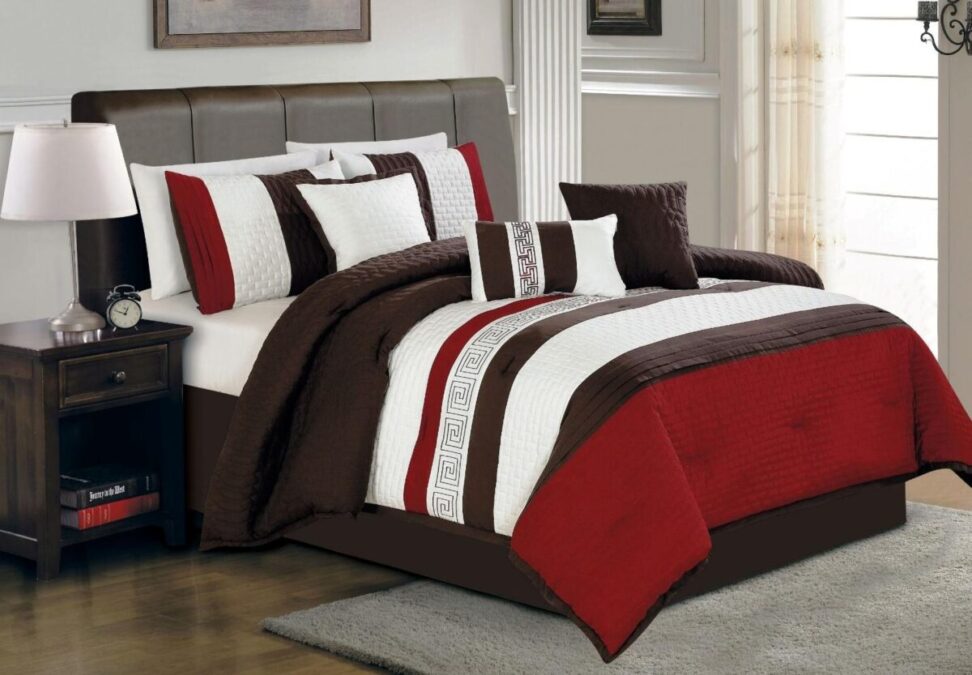Bed sheets have become an inseparable part of any bedroom, and the type of bed sheet a person uses is very important in getting up fresh for work the next morning. Hence the material, quality, and comfort matter when selecting bed sheets. Most bedding trends come and go; some styles, like floral prints, pastel tones, and stripes, never seem to go out of fashion. Moreover, needs are different in different seasons. For instance, heavyweight material may be discomforting and leave one sweating in the summertime, and vice versa for lightweight sheets during wintertime.
It is important to know how to choose the right sheets for the seasons so that your bedroom remains warm and cozy. One may use flannelette fitted sheets during winter because they are warm and soft, yet cotton or linen sheets would be more suitable for the summer season as they allow breathability and temperatures that are cool. Changing your bedding accordingly with every season could make a huge difference in the quality of your sleep. In this article, we will explore the tips for choosing bed sheets for every season.
Spring
For maximum comfort on spring nights, use bedding made of breathable and wicking materials with lighter fabrics that have lower tog ratings. Spring can be that time of the year when the weather may veer toward cool nights and warm days. Using breathable bedding will keep you cool and comfortable all night. Materials such as cotton or bamboo work very well due to their higher moisture-wicking ability.
Such fabrics will help draw moisture away from your body, so you will be kept dry and won’t get too hot. Another thing is that lighter fabrics with lower tog ratings are just the right ones for spring. They provide the correct level of insulation that neither gets heavy on you nor is too warm. This balance enables you to maintain your core body temperature and in return get a comfortable night’s sleep.
Summer
Summer nights with the burning sun and heat require bedding with breathability and cooling technologies. Summer bedding fabric selection should allow breathability. Go for natural materials like cotton and linen, as these have great properties for airflow that will keep a person cool and comfortable all night long. These fabrics wick away the moisture, hence your body won’t feel all sweaty and sticky on a hot summer night. Keep an eye out for sheet sets made from these breathable fabrics so that you will have a great amount of rest and refresh your sleep. Other than this, consider bedding with cooling technologies. Moisture-wicking sheet sets do exactly that they keep you dry and cool by wicking away the sweat from your body.
Fall
As the summer starts coming to an end it signals the time for some change in bedding. A bedding that would give you warmth during those cooler nights has to be included. One of the principal factors, when it involves your bedding, has to do with your duvet. You might have been using a light duvet in the summer but now it is about going for something a little warm. You’ll opt for a duvet with a higher tog rating to trap heat and keep you comfortable through the night. Body temperature is also important when it gets cold outside.
You might feel even colder at night, and to create extra warmth, you could layer your bed. First, you will need to start with a fitted sheet. Add blankets or throws to keep you warm. This layered approach will help you easily modify the amount of warmth you need as you pass through the night. Enjoy the coziness of fall with this bedding setup, able to work with temperature changes.
Winter
Get into your flannel sheets and burrow under a nice, down-filled duvet during those nippy winter nights. Look for warmth and insulation while choosing bedding for the winter season. Flannel or flannel sheets are manufactured with a soft and fuzzy material that will keep you warm throughout your sleep. These materials have a higher tog rating, therefore providing more insulation and holding the heat in better. Other than warm, fuzzy fabrics, you can also choose moisture-wicking bedding. With winter comes dry air, and the overall percentage of moisture lost from your body during sleep may increase. Moisture-wicking sheets help keep you warm but not sweaty by maintaining the amount of humidity around you.
Conclusion
One major decision that can affect comfortable sleep is the right bedding for each season. In spring, you’ll want natural, breathable, and moisture-wick materials like cotton or bamboo. In summer, cotton and linen are always advisable as they promote ventilation and cooling. Now, as fall starts to make its appearance, move on to warmer bedding and higher tog duvets with layers. Lastly, in winter, flannel or flannelette fitted sheets are fairly warm and provide insulation, along with moisture-wicking fabrics. Changing your bedding with the seasons means you are going to be able to have an excellent night’s slumber no matter the weather outside.
Also Read: https://usatimenetwork.com/




